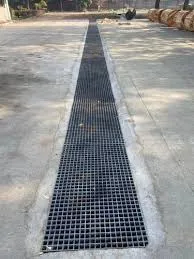
-
 Afrikaans
Afrikaans -
 Albanian
Albanian -
 Amharic
Amharic -
 Arabic
Arabic -
 Armenian
Armenian -
 Azerbaijani
Azerbaijani -
 Basque
Basque -
 Belarusian
Belarusian -
 Bengali
Bengali -
 Bosnian
Bosnian -
 Bulgarian
Bulgarian -
 Catalan
Catalan -
 Cebuano
Cebuano -
 China
China -
 China (Taiwan)
China (Taiwan) -
 Corsican
Corsican -
 Croatian
Croatian -
 Czech
Czech -
 Danish
Danish -
 Dutch
Dutch -
 English
English -
 Esperanto
Esperanto -
 Estonian
Estonian -
 Finnish
Finnish -
 French
French -
 Frisian
Frisian -
 Galician
Galician -
 Georgian
Georgian -
 German
German -
 Greek
Greek -
 Gujarati
Gujarati -
 Haitian Creole
Haitian Creole -
 hausa
hausa -
 hawaiian
hawaiian -
 Hebrew
Hebrew -
 Hindi
Hindi -
 Miao
Miao -
 Hungarian
Hungarian -
 Icelandic
Icelandic -
 igbo
igbo -
 Indonesian
Indonesian -
 irish
irish -
 Italian
Italian -
 Japanese
Japanese -
 Javanese
Javanese -
 Kannada
Kannada -
 kazakh
kazakh -
 Khmer
Khmer -
 Rwandese
Rwandese -
 Korean
Korean -
 Kurdish
Kurdish -
 Kyrgyz
Kyrgyz -
 Lao
Lao -
 Latin
Latin -
 Latvian
Latvian -
 Lithuanian
Lithuanian -
 Luxembourgish
Luxembourgish -
 Macedonian
Macedonian -
 Malgashi
Malgashi -
 Malay
Malay -
 Malayalam
Malayalam -
 Maltese
Maltese -
 Maori
Maori -
 Marathi
Marathi -
 Mongolian
Mongolian -
 Myanmar
Myanmar -
 Nepali
Nepali -
 Norwegian
Norwegian -
 Norwegian
Norwegian -
 Occitan
Occitan -
 Pashto
Pashto -
 Persian
Persian -
 Polish
Polish -
 Portuguese
Portuguese -
 Punjabi
Punjabi -
 Romanian
Romanian -
 Russian
Russian -
 Samoan
Samoan -
 Scottish Gaelic
Scottish Gaelic -
 Serbian
Serbian -
 Sesotho
Sesotho -
 Shona
Shona -
 Sindhi
Sindhi -
 Sinhala
Sinhala -
 Slovak
Slovak -
 Slovenian
Slovenian -
 Somali
Somali -
 Spanish
Spanish -
 Sundanese
Sundanese -
 Swahili
Swahili -
 Swedish
Swedish -
 Tagalog
Tagalog -
 Tajik
Tajik -
 Tamil
Tamil -
 Tatar
Tatar -
 Telugu
Telugu -
 Thai
Thai -
 Turkish
Turkish -
 Turkmen
Turkmen -
 Ukrainian
Ukrainian -
 Urdu
Urdu -
 Uighur
Uighur -
 Uzbek
Uzbek -
 Vietnamese
Vietnamese -
 Welsh
Welsh -
 Bantu
Bantu -
 Yiddish
Yiddish -
 Yoruba
Yoruba -
 Zulu
Zulu
Understanding FRP Stub Flanges in Composite Material Applications
Understanding FRP Stub Flanges A Comprehensive Overview
Fiber Reinforced Polymer (FRP) materials have gained immense popularity in various engineering applications, particularly in industries requiring lightweight yet durable solutions. Among the myriad of components used in conjunction with these materials, the FRP stub flange stands out as an essential element in piping and structural systems.
Understanding FRP Stub Flanges A Comprehensive Overview
One of the primary benefits of using FRP stub flanges is their resistance to corrosion. Unlike traditional metal flanges that can succumb to rust and degradation when exposed to corrosive substances, FRP stub flanges maintain integrity over time, significantly extending the lifespan of piping systems. This characteristic is particularly advantageous in industries dealing with aggressive chemicals or sea environments where corrosion can lead to costly repairs and downtime.
frp stub flange

Another advantage of FRP stub flanges is their lightweight nature. This property allows for easier handling and installation, reducing labor costs and improving overall efficiency. The reduced weight also means that support structures can be less robust, leading to further savings in material and construction costs.
The manufacturing process of FRP stub flanges typically involves techniques like pultrusion or resin transfer molding, ensuring that these components have a uniform structure and high-quality finish. This level of precision is vital for achieving the tight tolerances required for effective sealing and joint integrity.
However, like any material choice, there are considerations to keep in mind. FRP flanges may have limitations in high-temperature applications compared to metal flanges. Therefore, it is crucial to assess the specific requirements of the intended application and consult with manufacturers to select the appropriate materials and designs.
In conclusion, FRP stub flanges offer a compelling solution for joining piping systems, particularly in environments where corrosion resistance and weight savings are paramount. As industries continue to embrace advanced materials, the role of FRP components, including stub flanges, is likely to expand, proving their worth in modern engineering applications. Emphasizing their benefits while understanding their limitations will enable engineers and project managers to make informed decisions in their designs.









